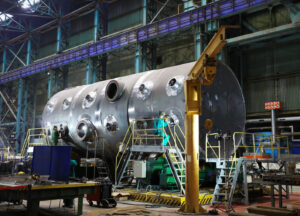Dhaka, Aug 28 – First fuel assembly was loaded into the core of Unit 4 of Tianwan Nuclear Power Project in China on August 225, 2018. The project is being implemented with the assistance of Atomstroyexport (ASE), Engineering Division of Rosatom State Corporation, Russia.“Fuel loading is the commencement of the unit’s criticality procedures. Unit 4 will then enter the start-up stage and to be connected to the power grid of China”, said Alexey Bannik, Director, ASE EC projects in China. “We are planning to complete all major tasks by the end of the year, in accordance with the schedule”.
A total of 163 Fuel Assemblies (FA) to be loaded into the reactor core. Once the fuel loading, starting up and adjustment works are complete, the unit will be brought to minimum controllable power level (MCL), followed by the power start-up.
The second phase of Tianwan NPP (power Units 3 and 4) is being implemented with Russian assistance. Currently, three VVER-1000 power units constructed under the Russian design, are operational at Tianwan NPP.
“Units 1 and 2 under the first phase of Tianwan NPP have been efficiently been functioning for over 10 years with the capacity factor exceeding 90%, a record for this type of reactors”, informed Valery Kedrov, Deputy Director of St. Petersburg Design Institute, that was responsible for Tianwan NPP design.
Tianwan NPP is the biggest facility, built within the Russian-Chinese economic cooperation framework. In 2007 Unit 1 and 2 under the first phase of Tianwan NPP were commissioned. Start-up of Unit 3 under the second phase of of Tianwan NPP took place in December 2017.
On June 8, 2018 Under a strategic package of documents signed in Beijing on June 8, 2018 on Russia-China cooperation in the field of nuclear power for the forthcoming decades, four new power units with VVER-1200 reactors of Gen 3+ will be built at Tianwan NPP (Unit 7 and 8) and 2 power units at a new site of Xudapu.
Construction of Tianwan Nuclear Power Plant is being carried out by Jiangsu Nuclear Power Corporation (JNPC) of China in cooperation with the Russian company Atomstroyexport. – Press release




